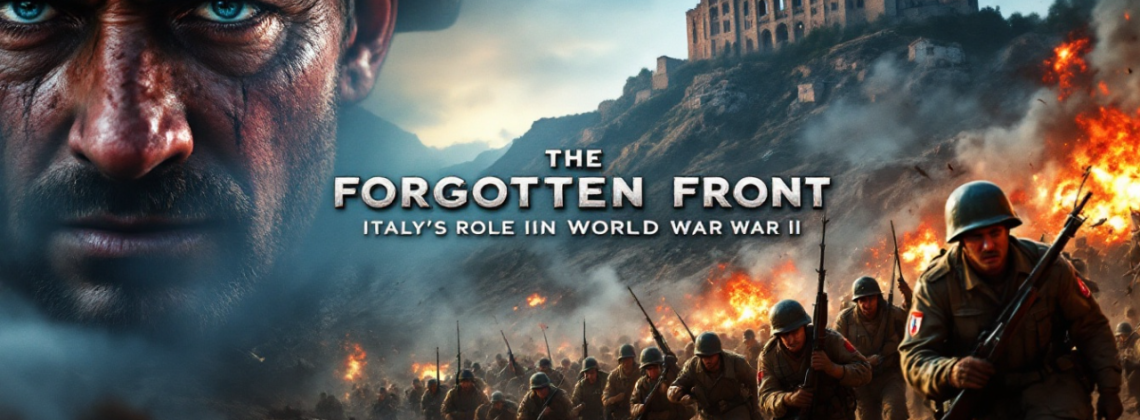
World War II unfolded across vast and varied landscapes, from the icy plains of Eastern Europe to the sweltering deserts of North Africa. Yet, amidst these iconic theaters of war, the Italian Campaign remains an often overlooked chapter. Spanning from 1943 to 1945, this grueling campaign tested the strength and resolve of Allied and Axis forces alike. Italy’s rugged terrain, harsh weather, and determined German resistance made this front a brutal war of attrition, contributing significantly to the eventual Allied victory. Let’s dive into the pivotal battles, the sacrifices of soldiers, and the enduring legacy of this campaign.
The Beginning: Operation Husky and the Invasion of Sicily
The Italian Campaign began with a bold move, Operation Husky, the Allied invasion of Sicily, in July 1943. This operation marked the Allies’ first step in taking the fight directly to mainland Europe. Under the cover of darkness, thousands of troops stormed Sicily’s shores, facing fierce resistance from Italian and German forces. The island’s mountainous terrain turned it into a battlefield fraught with challenges.
After 38 days of relentless fighting, the Allies emerged victorious, paving the way for the collapse of Mussolini’s fascist regime and Italy’s eventual surrender. However, the Germans, anticipating this turn of events, quickly occupied key strategic positions, ensuring that the fight on the Italian mainland would be long and bloody.
Operation Avalanche and the Battle of Salerno
With Sicily secured, the Allies launched Operation Avalanche on September 9, 1943, landing at Salerno, south of Naples. Their objective was clear: establish a beachhead and advance toward Rome. However, the Germans were ready. The Battle of Salerno was a brutal baptism of fire for the Allies, with German forces launching a fierce counteroffensive that pushed the Allies to the edge of retreat.
Despite heavy casualties and intense resistance, the Allies held their ground. Naval gunfire and reinforcements eventually turned the tide, allowing the Allies to secure Salerno and begin a slow, arduous push northward through the Italian Peninsula.
The Mounting Challenges: Monte Cassino and Anzio
Progress through Italy was excruciatingly slow. German forces, masters of defensive warfare, used Italy’s rugged terrain to their advantage, establishing fortified positions that turned every town and mountain pass into a battlefield. Two of the most infamous engagements during this period were the battles of Monte Cassino and Anzio.
Monte Cassino, with its historic hilltop abbey turned German fortress, became a symbol of Allied frustration. Four major assaults on the abbey resulted in heavy casualties and destruction before the Allies finally captured it. Meanwhile, Operation Shingle at Anzio, an amphibious landing aimed at outflanking German defenses, initially succeeded but soon stalled as German reinforcements bottled up the beachhead. Both battles epitomized the grueling nature of the Italian Campaign, months of fighting with no decisive advantage for either side.
The Liberation of Rome: A Turning Point
Amidst the hardships, a major victory came on June 4, 1944, when Allied forces entered Rome. The liberation of the Eternal City was a symbolic and strategic triumph, boosting Allied morale and delivering a psychological blow to the Axis powers. The Italian people welcomed the Allies as liberators, marking a significant step in the fight for freedom.
Yet, the war in Italy was far from over. Just two days after Rome’s liberation, the Allies launched the Normandy invasion, shifting the primary focus of the war to Western Europe. Still, the Italian Campaign continued to tie down significant German forces, preventing their deployment elsewhere.
The Gothic Line and the Final Push
Following Rome’s capture, German forces retreated to the formidable Gothic Line in the Apennine Mountains. This defensive line, with steep slopes and heavily fortified positions, presented a daunting challenge to the Allies. The offensive to breach the Gothic Line began in late August 1944, and the campaign turned into another brutal war of attrition fought in treacherous terrain and harsh weather.
The Gothic Line Campaign lasted months, with the Allies slowly but steadily pushing German forces back. The eventual breach of this line marked the final major engagement of the Italian Campaign, though at a high cost in lives and resources.
The Legacy of the Italian Campaign
The Italian Campaign was a crucible of courage and sacrifice. Soldiers from diverse nations, American, British, Canadian, Indian, New Zealand, South African, and others, fought side by side, united in their common purpose. They endured unimaginable hardships, from muddy trenches to relentless combat in ancient ruins, and their bravery and resilience defined this “Forgotten Front.”
Though often overshadowed by the battles in France and Germany, the Italian Campaign played a critical role in the Allied victory. It tied down significant German forces, weakened the Axis war machine, and provided valuable lessons in amphibious operations and mountain warfare. The sacrifices made in Italy remind us of the human cost of war and the enduring importance of striving for peace.
Conclusion: Remembering the Forgotten Front
As we approach the 80th anniversary of World War II’s end in 2025, it’s essential to remember the sacrifices made on all fronts, including the often-overlooked Italian Campaign. The courage and determination of the Allied soldiers who fought there should not be forgotten. Their legacy serves as a powerful reminder of the resilience of the human spirit in the face of adversity.
